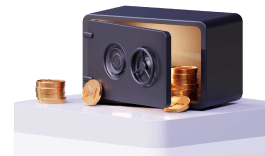Spreads Meaning in Forex Explained to Beginners
As a Forex market trader, you will generally deal with major currency pairs. Although most of them are traded without commission, it does not mean they are 100% cost-free, as spreads are actually the cost that will be automatically applied to every order you place.

When it comes to leverage trading brokers, they prefer incorporating spreads into the trade cost instead of charging commissions or separate fees. The size of that cost can vary from one broker to another. Besides, it usually depends on a variety of factors that may include volatility, the type of currency pair, or which particular currency you trade.
In this article, we will define the spreads meaning as well as describe major types and ways to calculate and spot them using major Forex indicators.
What Are Spreads in Forex?
To define spread, we need to understand its nature first. Spreads come as a difference between the ask or buy price and bid or sell price when trading currency pairs. As a trader, you always see two major prices:
- The Bid Price at which you have a chance to sell the asset.
- The Ask Price is the cost of the currency pair at which you can buy it.
Note: the ask quote price is generally higher than the bid quote price (quoted currency is displayed on the right while the base currency is shown on the left).
How to Define Spreads Meaning?
To understand the spreads meaning, you need to realize that it can be measured using pips. A pip represents a movement of the currency pair price and generally equal to 0.0001 (sometimes, it can be different depending on the wagering requirements established by a particular broker). This rule applies to all major currency pairs with the exception of the Japanese yen that has pips equal to 0.01.
If you spot a wider spread, you can read a bigger difference between the bid and ask price. In other words, the asset comes with increased volatility and low liquidity. A lower spread means higher liquidity and lower volatility, which also means a smaller cost of spreads.
up to 200%

from 0 pips

Trading platform

Major Types of Spreads
Nothing special here. Traders are going to deal with two major types of spreads: fixed and variable. The type of spread depends on the instrument you trade. For instance, fixed spreads are more common for indices while currency pairs usually come with variable spreads. When the price changes, the spread changes as well.
Fixed Spreads Pros and Cons:
- Transaction costs are easy to predict.
- Good for newbies and amateur traders.
- Lower capital requirements.
- They are not affected by the market volatility.
- Can be exposed to slippage.
Variable Spreads pros and cons:
- Zero requote risks.
- Reveals market liquidity.
- Can grow wider unexpectedly.
- Hard to predict.
- Good for experienced traders only.
Make sure you understand the nature of two spread types before opening a Live Account. Use additional tools to define and calculate spreads before you start trading.
Tips to Identify Spreads
When trading currencies, you will see the spread indicated as a curve that shows its direction in references to the ask or bid price. Forex spreads can be affected by a variety of factors ranging from market liquidity, major economic news, and other events that may result in fluctuation.
To prepare for the trade and ensure wise decision-making, experts recommend using the economic calendar to get ready for wider spreads to occur. What’s more, it is very important to keep an eye on major news and economic events taking place around the globe as well as in the country-issuer. If a pair is traded in high volume, the spread will always be lower and vice versa.
The Bottom Line
We have learned that Forex spreads represent the difference between the ask and bid price. They can be of two major types and are influenced by different financial factors. To measure spreads, traders use pips that show the price movement. While practically all major currencies are traded in a high volume, they usually have tighter spreads. To get prepared for wider spreads, traders need to stay tuned to the latest news and financial events.
This material does not contain and should not be construed as containing investment advice, investment recommendations, an offer of or solicitation for any transactions in financial instruments. Before making any investment decisions, you should seek advice from independent financial advisors to ensure you understand the risks.
